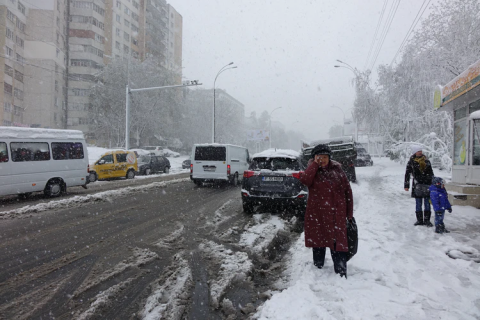Legal Blog
Driver Safety in Winter Weather
Safe driving is a must regardless of your driving experience or the weather condition you're driving in. But doing so during wintertime can be more challenging and dangerous. Mishaps happen even when the weather is clear, and much more in winter when the road is wet and icy.
Although hibernating and staying off the road seems the ideal thing to do during winter, it's not merely possible for everyone. But whether or not you're staying indoors, it would be best to equip yourself with extra precaution when driving in such undesirable weather and road conditions.
Thus, we've highlighted a few helpful tips you can learn to ensure more driver safety in winter weather.
Top Causes of Car Accident and Injury in Winter
Winter weather brings a variety of potential risks for car accidents and injuries. Thus, knowing how to navigate on slick roads is essential to minimize or avoid them. But to prepare you better, it would be more helpful if you are aware of what causes them.
We've prepared the following list of the top causes of such accidents and injuries. You might want to pay more attention to them before you hit the road in the winter season.
Icy Roads
During winter months, the roads are mostly covered with snow and ice, making it harder for you to brake, slow down, or turn your vehicle safely. You're also likely to encounter black ice, which is hard to see and can easily cause you to lose control of your vehicle. That's why spin out collisions and rear-end collisions are one of the most common accidents in winter.
Poor Visibility
Winter weather can affect your visibility. Heavy snowfall, dense fog, blinding rain, and other winter precipitation can significantly reduce your ability to see what is in front of you. Thus, it can be challenging to maintain a proper position on the road, making you prone to lane-drifting accidents.
Bald Tires
Bald tires can make driving in the weather more dangerous. If your tires are bald, there won't be enough traction to slow down, stop, and turn properly on icy roads, which can put you at risk for accidents. Besides that, the air pressure in your tires won't be the same in the winter and may lead to a tire blowout crash.
All these things are more likely to occur in the wintertime. In fact, around 11 to 17 percent of car accidents are directly linked to winter roads and conditions based on the National Highway Traffic Safety Administration (NHTSA).
Moreover, such winter car accidents can both cause non-fatal and fatal injuries. If you or a loved one get involved in an unfortunate car accident with resulting injury, you would need to consult with one of the injury attorneys in your area. They have the skills and knowledge to represent you and fight for the compensation you deserve.
Additional Hazards To Be Prepared For
Other hazards may put you at risk when driving in the winter weather. Run through each of them and see how you can best prepare for them.
Fitness To Drive
Your physical and mental fitness may affect safety in driving. Note that driving on winter roads requires more attention and control. If you're stressed and tired, it can be more difficult for you to concentrate.
Unfamiliar Routes
Roads in winter are harder to navigate because they are covered with ice or snow. It can also be more difficult to see and read road signs. If you're unfamiliar with the routes, you're more likely to turn on the wrong way, which may cause an unfortunate crash.
Night Driving
Driving at night can be trickier, especially when it's wintertime. The light properties of snow may cause your headlights to reflect light to you, contributing to lower visibility. Thus, you would have less time to respond when something happens on the road.
Ways To Decrease Risks
Both road and weather conditions during winter are not ideal for driving. But there are ways to decrease the risks of getting crashed and injured in such undesirable situations.
Inspect Your Vehicle
Safe driving starts even before you get on the road. Whether or not it's winter, you must inspect your vehicle before driving. But focus on those parts that are more likely to be affected by winter conditions, such as tires, windshields, wipers, brakes, and traction control systems.
Adjust Your Driving Habits
Driving on winter roads is different, and you need to adjust your driving habits to adapt to these changes. Because of the slick roads and poor visibility, you should be more conscious of accelerating and decelerating more slowly. Driving at slower speeds would help you sustain traction and control of your vehicle.
Check The Weather
It would be best to check your local weather forecast before heading out. If conditions are terrible, you might need to consider changing your plans. But if you badly need to drive in a big snowstorm, ensure to let someone know so they will look for you if something might happen.
Takeaway
Winter driving conditions are already given. As a driver, it's your responsibility to prepare yourself and your vehicle for the risks associated with winter. And when you're on the road, remember to slow down, stay alert, and stay in control.


Комментарии